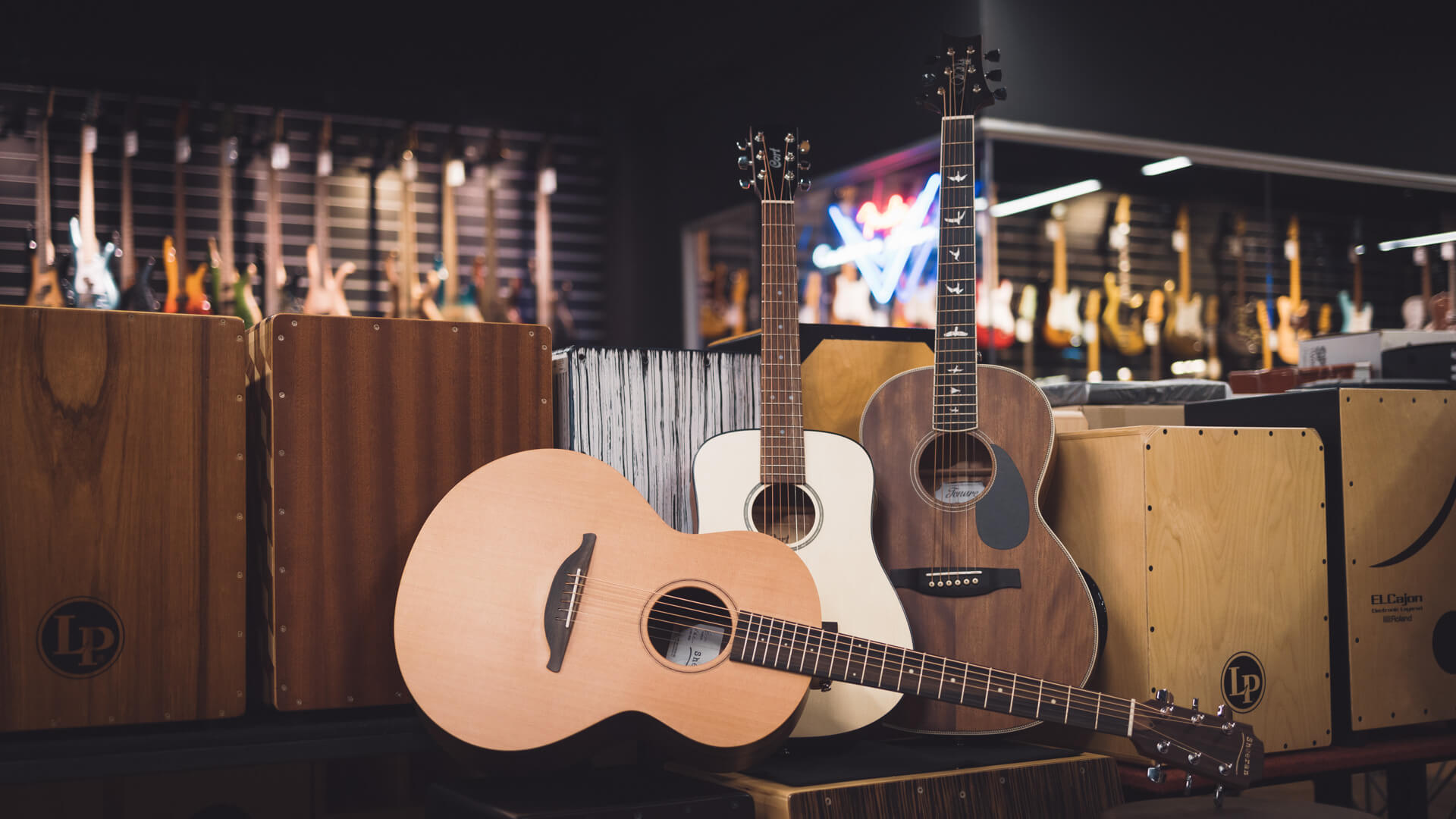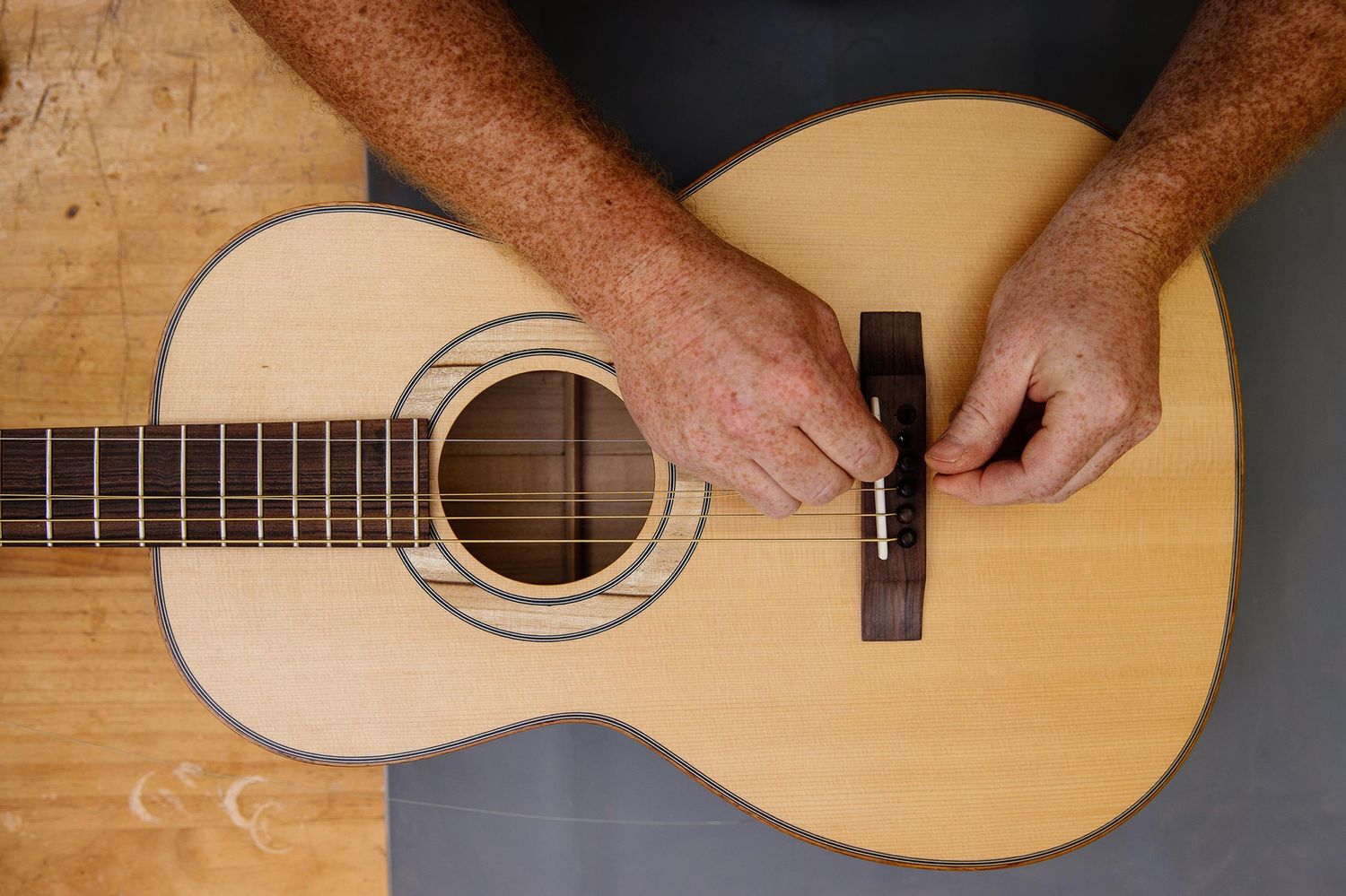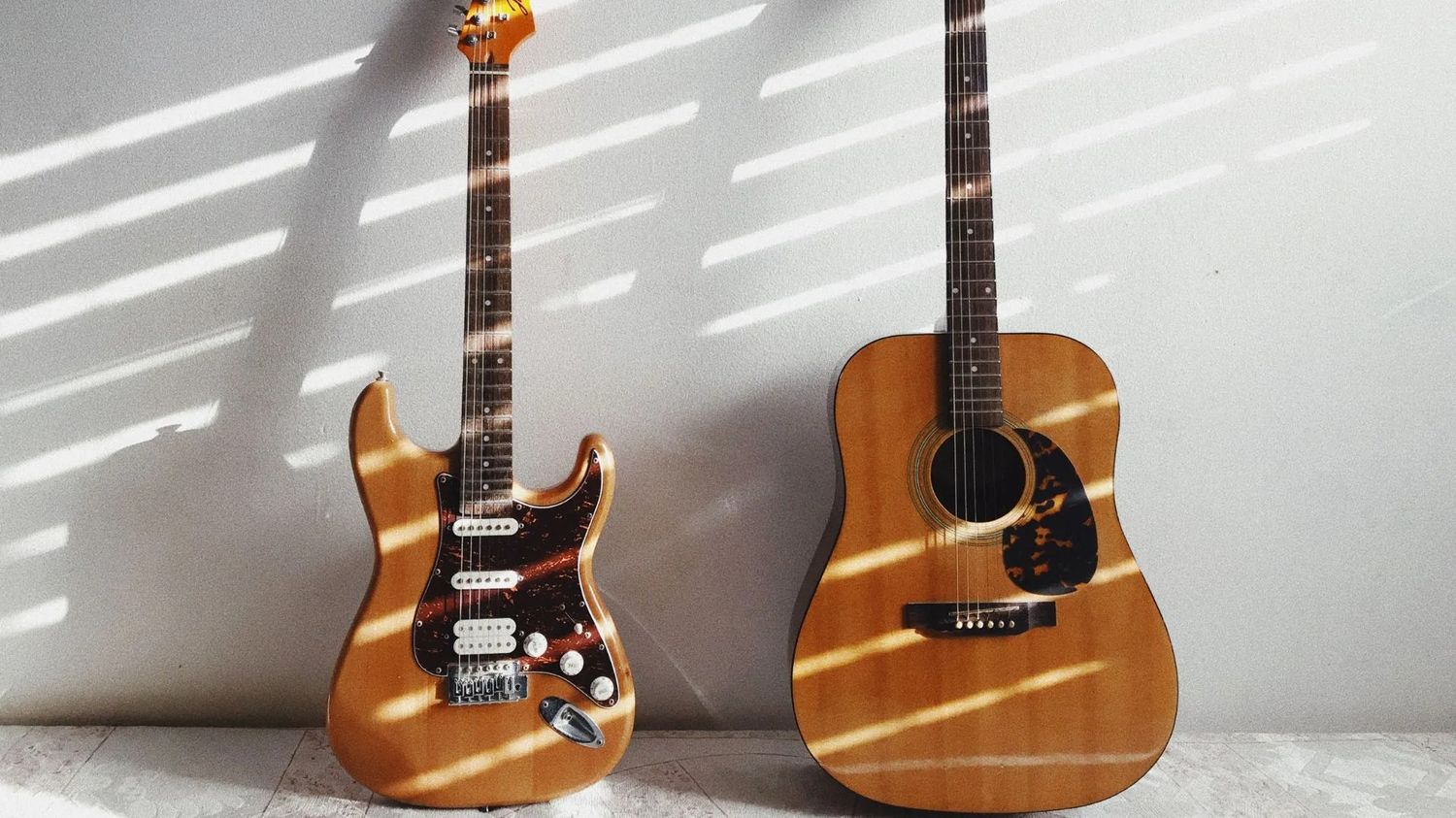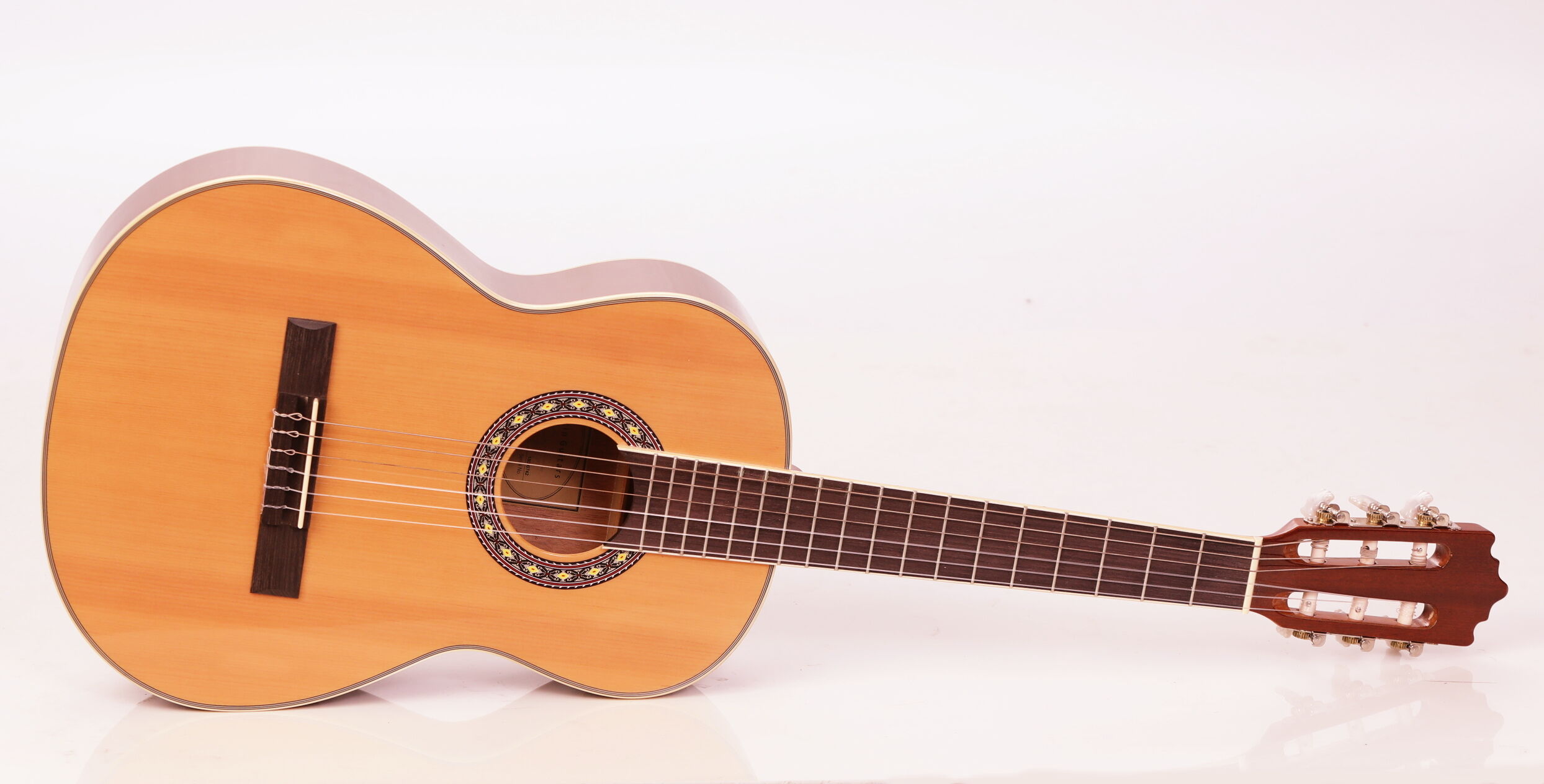Home>Production & Technology>Acoustic>What Is A Dreadnought Acoustic Guitar
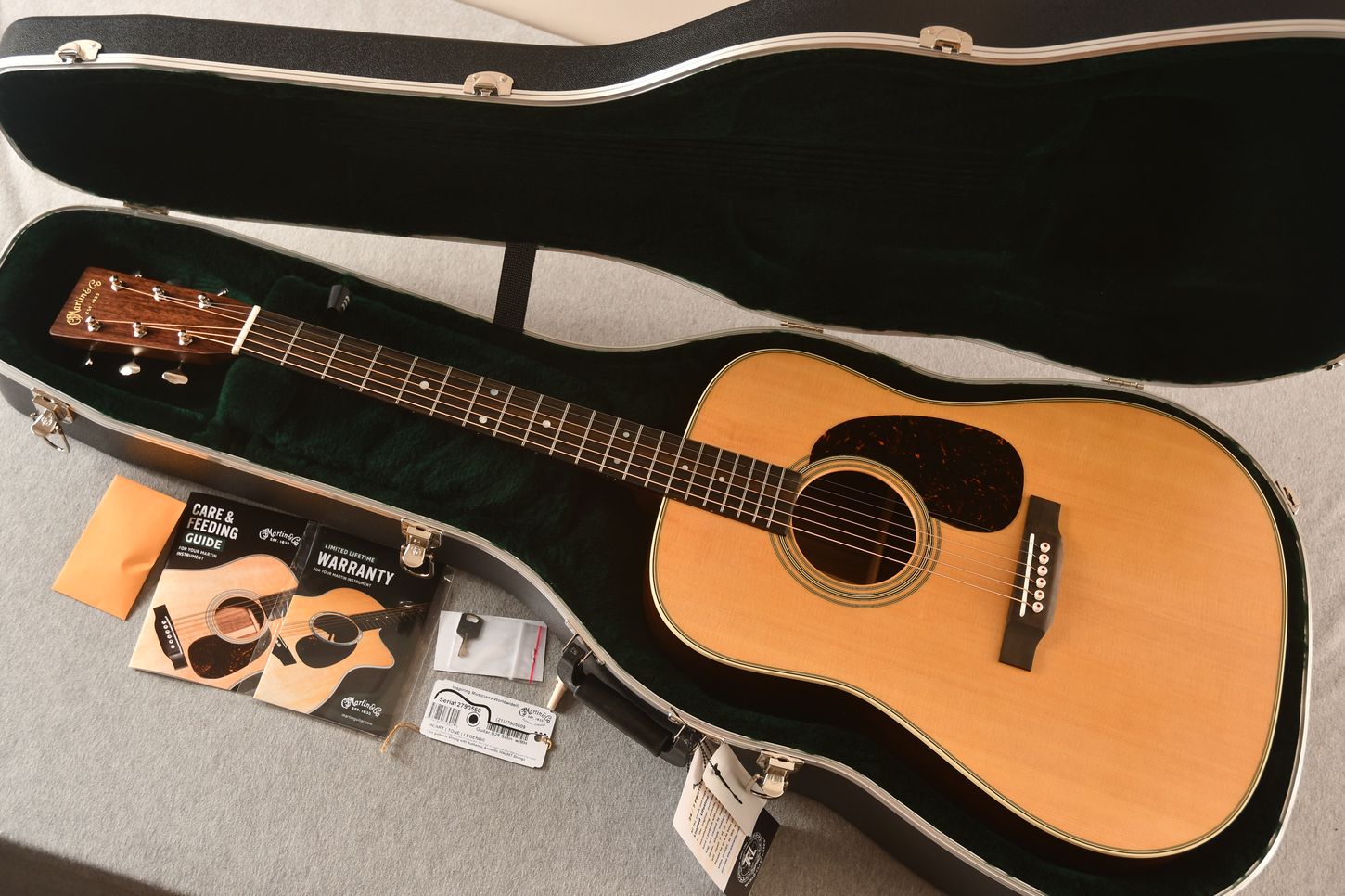

Acoustic
What Is A Dreadnought Acoustic Guitar
Published: March 11, 2024
Discover the history and unique features of dreadnought acoustic guitars. Learn about their design, sound, and why they're a popular choice for acoustic musicians.
(Many of the links in this article redirect to a specific reviewed product. Your purchase of these products through affiliate links helps to generate commission for AudioLover.com, at no extra cost. Learn more)
Table of Contents
Introduction
The dreadnought acoustic guitar is an iconic instrument that has left an indelible mark on the world of music. With its distinctive shape, powerful sound, and versatile capabilities, the dreadnought has become a beloved choice for musicians across genres. Whether you're a seasoned guitarist or a budding enthusiast, understanding the essence of the dreadnought acoustic guitar is essential for appreciating its significance in the realm of music.
The term "dreadnought" itself evokes a sense of grandeur and power, mirroring the instrument's commanding presence. Its origins can be traced back to the early 20th century, when the C.F. Martin Company introduced this groundbreaking guitar design. Named after the British battleship HMS Dreadnought, which was known for its formidable size and strength, the dreadnought guitar was similarly built to deliver unparalleled volume and projection.
As you delve into the world of dreadnought guitars, you'll discover that they are revered for their ability to produce rich, resonant tones that effortlessly fill a room. This makes them a popular choice for solo performances, group jam sessions, and studio recordings. The distinct sound of a dreadnought guitar is characterized by its deep bass, clear midrange, and crisp treble notes, creating a harmonious blend that captivates listeners and players alike.
In addition to its impressive sonic qualities, the dreadnought guitar boasts a robust and eye-catching design. Its broad shoulders and large body contribute to its commanding presence, while the wide soundboard allows for enhanced resonance and projection. These features make the dreadnought a visually striking instrument that exudes a sense of authority and craftsmanship.
Whether you're drawn to the rich history, powerful sound, or striking appearance of the dreadnought acoustic guitar, there's no denying its enduring appeal. As we explore the history, characteristics, popular models, and playing styles associated with this iconic instrument, you'll gain a deeper appreciation for the impact it has had on the world of music. Join us on this journey to uncover the essence of the dreadnought acoustic guitar and the myriad ways it continues to inspire musicians and enthusiasts worldwide.
History of the Dreadnought Acoustic Guitar
The history of the dreadnought acoustic guitar is a captivating tale that intertwines innovation, craftsmanship, and musical influence. The origins of this iconic instrument can be traced back to the early 20th century, when the C.F. Martin Company revolutionized the world of guitar design with the introduction of the dreadnought model.
In 1916, the C.F. Martin Company unveiled the dreadnought guitar, a bold departure from the traditional guitar shapes of the time. Named after the British battleship HMS Dreadnought, renowned for its imposing size and powerful artillery, the dreadnought guitar embodied a similar spirit of strength and dominance. This new design featured a larger, broader body and a distinctive square-shouldered shape, setting it apart from its predecessors.
The primary motivation behind the creation of the dreadnought guitar was to produce an instrument with enhanced volume and projection. This was particularly significant in the context of the evolving music landscape, where musicians sought guitars capable of cutting through the sound of larger ensembles and orchestras. The dreadnought's larger soundboard and body dimensions facilitated greater resonance and amplified the instrument's acoustic output, making it an ideal choice for musicians seeking a commanding presence on stage or in recording studios.
The impact of the dreadnought guitar reverberated across musical genres, from folk and country to blues and rock. Its versatility and powerful sound made it a favored instrument among musicians seeking to make a bold sonic statement. Over the years, the dreadnought's influence continued to grow, cementing its status as an enduring symbol of acoustic excellence.
As the decades passed, the dreadnought guitar underwent various refinements and adaptations, further solidifying its place in musical history. Today, it remains a beloved choice for musicians and enthusiasts worldwide, a testament to its enduring legacy and timeless appeal.
The history of the dreadnought acoustic guitar serves as a testament to the enduring impact of innovative instrument design. From its humble beginnings to its widespread adoption and continued relevance, the dreadnought guitar stands as a testament to the power of visionary craftsmanship and its ability to shape the musical landscape for generations to come.
Characteristics and Features
The dreadnought acoustic guitar is renowned for its distinctive characteristics and features, setting it apart as a beloved instrument cherished by musicians and enthusiasts worldwide. From its imposing size to its resonant tonal qualities, the dreadnought guitar embodies a unique blend of craftsmanship and sonic prowess.
1. Size and Shape
The most striking feature of the dreadnought acoustic guitar is its imposing size and square-shouldered shape. This design sets it apart from traditional guitar models, exuding a commanding presence that captures the attention of both players and audiences. The broad shoulders and expansive body contribute to the instrument's powerful projection and resonant sound, making it an ideal choice for live performances and studio recordings.
2. Sound Projection
One of the defining characteristics of the dreadnought guitar is its exceptional sound projection. The larger soundboard and body dimensions allow for enhanced resonance, resulting in a rich, full-bodied sound that fills a room with warmth and clarity. Whether played acoustically or amplified, the dreadnought's ability to project its sound with authority makes it a versatile and reliable instrument for a wide range of musical styles and settings.
3. Tonal Qualities
The dreadnought guitar is celebrated for its balanced and articulate tonal qualities. Its deep bass notes resonate with warmth and depth, while the clear midrange and crisp treble notes contribute to a harmonious sonic profile. This well-rounded tonal spectrum makes the dreadnought an instrument of choice for solo performances, accompaniment, and ensemble playing, allowing it to seamlessly blend with other instruments while maintaining its distinct sonic presence.
4. Versatility
Another notable feature of the dreadnought acoustic guitar is its versatility. Whether strummed with vigor or fingerpicked with precision, the dreadnought responds adeptly to a variety of playing styles and techniques. Its dynamic range and responsive nature make it well-suited for genres ranging from folk and country to blues and rock, earning it a reputation as a go-to instrument for musicians seeking a reliable and expressive acoustic companion.
5. Visual Appeal
In addition to its sonic attributes, the dreadnought guitar boasts a visually striking appearance. The combination of its bold shape, elegant craftsmanship, and fine wood finishes makes it a captivating instrument to behold. Whether on stage, in a studio, or displayed in a collection, the dreadnought's aesthetic allure adds to its overall appeal and timeless charm.
The characteristics and features of the dreadnought acoustic guitar converge to create an instrument that embodies power, versatility, and sonic excellence. Its enduring legacy and continued relevance in the world of music stand as a testament to the enduring allure of this iconic instrument.
Popular Dreadnought Acoustic Guitar Models
The world of acoustic guitars is replete with a diverse array of dreadnought models, each offering its own unique blend of craftsmanship, tonal characteristics, and visual appeal. From revered classics to modern innovations, these popular dreadnought acoustic guitar models have left an indelible mark on the music industry, captivating players and enthusiasts alike.
1. Martin D-28
The Martin D-28 stands as a paragon of acoustic excellence, revered for its rich heritage and timeless sound. With a solid Sitka spruce top, East Indian rosewood back and sides, and meticulous craftsmanship, the D-28 delivers a balanced and resonant tone that has become synonymous with the Martin name. Its versatility and responsiveness make it a favored choice for discerning musicians across genres.
2. Gibson J-45
The Gibson J-45 holds a storied legacy as one of the most iconic acoustic guitars in history. Renowned for its warm, mellow sound and understated elegance, the J-45 features a solid mahogany top, mahogany back and sides, and a distinctive slope-shouldered design. Whether strummed gently or played with fervent intensity, the J-45 exudes a timeless charm that has made it a staple in the acoustic guitar world.
3. Taylor 214ce
The Taylor 214ce represents a modern interpretation of the dreadnought tradition, blending innovative design with exceptional playability. Boasting a solid Sitka spruce top, layered rosewood back and sides, and Taylor's renowned Expression System electronics, the 214ce offers a clear, balanced sound both acoustically and when amplified. Its sleek aesthetic and ergonomic features make it a popular choice for contemporary players seeking a versatile and reliable instrument.
4. Yamaha FG830
The Yamaha FG830 embodies the essence of value and performance, offering a compelling combination of affordability and quality. Featuring a solid spruce top, rosewood back and sides, and Yamaha's meticulous construction, the FG830 delivers a robust and resonant sound that belies its accessible price point. Its enduring popularity among beginners and seasoned players alike speaks to its reputation as a dependable and rewarding instrument.
5. Guild D-240E
The Guild D-240E exemplifies the brand's commitment to crafting exceptional acoustic guitars with a nod to tradition. With a solid spruce top, mahogany back and sides, and Guild's signature arched back design, the D-240E produces a warm, balanced tone with a pronounced low end. Enhanced by its onboard electronics and vintage-inspired aesthetics, the D-240E offers a compelling blend of classic appeal and modern functionality.
These popular dreadnought acoustic guitar models represent a mere glimpse into the diverse and vibrant world of acoustic craftsmanship. Whether steeped in tradition or pushing the boundaries of innovation, each model contributes to the rich tapestry of acoustic guitar history, inspiring players and resonating with audiences around the globe.
Playing Styles and Techniques
The dreadnought acoustic guitar's versatility extends beyond its sonic capabilities, encompassing a wide spectrum of playing styles and techniques that cater to the expressive needs of musicians across genres. From intricate fingerpicking to dynamic strumming, the dreadnought accommodates a myriad of approaches, allowing players to unleash their creativity and musicality.
1. Strumming
The dreadnought's robust construction and expansive soundboard make it an ideal choice for strumming, a technique characterized by sweeping the fingers or a pick across the strings to produce a full, resonant sound. Whether accompanying vocals or leading a rhythmic ensemble, the dreadnought's powerful projection and balanced tonal qualities lend themselves to dynamic strumming patterns, making it a favored instrument for folk, country, and rock musicians.
2. Fingerpicking
The dreadnought's articulate tonal response and wide dynamic range make it well-suited for fingerpicking, a technique that involves plucking the strings with the fingertips to create intricate melodies and harmonies. Its clear midrange and crisp treble notes allow fingerpicked passages to shine with clarity and expressiveness, making the dreadnought a versatile choice for acoustic blues, folk, and contemporary fingerstyle compositions.
3. Flatpicking
Flatpicking, a technique that involves using a flat pick to strike the strings with precision and speed, finds a natural ally in the dreadnought acoustic guitar. The instrument's strong, defined attack and ample sustain enable flatpicked melodies and solos to soar with clarity and authority, making it a popular choice for bluegrass, country, and acoustic rock musicians seeking to deliver dynamic and compelling performances.
4. Percussive Playing
The dreadnought's robust construction and resonant tonal qualities lend themselves to percussive playing techniques, where the guitar's body is used as a percussive instrument in addition to producing melodic notes. By incorporating techniques such as tapping, slapping, and body percussion, musicians can create rhythmic textures and dynamic accents, adding depth and excitement to their performances.
5. Alternate Tunings
Exploring alternate tunings is another avenue through which the dreadnought acoustic guitar showcases its adaptability and expressive potential. By retuning the strings to non-standard pitches, musicians can unlock new harmonic possibilities and evoke unique tonal textures, allowing the dreadnought to transcend traditional boundaries and inspire innovative compositions and arrangements.
In essence, the dreadnought acoustic guitar serves as a versatile canvas for musicians to explore an array of playing styles and techniques, each contributing to the instrument's rich tapestry of sonic expression and musical diversity. Whether strummed with vigor, fingerpicked with finesse, or employed as a percussive instrument, the dreadnought remains a steadfast companion for musicians seeking to unleash their creativity and captivate audiences with its timeless allure.
Conclusion
In conclusion, the dreadnought acoustic guitar stands as a testament to the enduring legacy of innovative instrument design and the profound impact it has had on the world of music. From its humble beginnings in the early 20th century to its widespread adoption and continued relevance in the modern era, the dreadnought guitar has left an indelible mark on musicians and enthusiasts worldwide.
The rich history of the dreadnought guitar, rooted in the visionary craftsmanship of the C.F. Martin Company, reflects a commitment to pushing the boundaries of acoustic instrument design. The introduction of the dreadnought model represented a bold departure from traditional guitar shapes, driven by a desire to create an instrument with enhanced volume and projection. This pioneering spirit continues to resonate through the instrument's enduring popularity and timeless appeal.
The characteristics and features of the dreadnought acoustic guitar converge to create an instrument that embodies power, versatility, and sonic excellence. Its imposing size, exceptional sound projection, balanced tonal qualities, and visual allure make it a beloved choice for musicians seeking a reliable and expressive acoustic companion. Whether strummed with vigor, fingerpicked with finesse, or employed as a percussive instrument, the dreadnought remains a steadfast companion for musicians seeking to unleash their creativity and captivate audiences with its timeless allure.
Furthermore, the diverse array of popular dreadnought acoustic guitar models, from revered classics to modern innovations, reflects the instrument's ability to evolve while staying true to its foundational principles. Each model contributes to the rich tapestry of acoustic guitar history, inspiring players and resonating with audiences around the globe. Whether steeped in tradition or pushing the boundaries of innovation, these models showcase the enduring allure and adaptability of the dreadnought guitar.
In essence, the dreadnought acoustic guitar represents a harmonious blend of tradition and innovation, craftsmanship and sonic prowess, making it an instrument that continues to inspire and captivate musicians and enthusiasts alike. Its enduring legacy and continued relevance in the world of music serve as a testament to the profound impact of visionary instrument design and the timeless allure of acoustic excellence.


